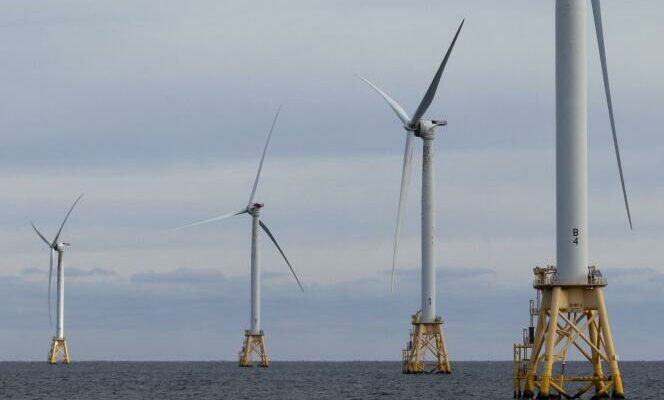Orsted no longer has the wind in its blades, hampered by the cost of developing certain wind turbine fields. The Danish offshore wind giant announced, Wednesday February 7, a loss of 20.2 billion crowns (2.7 billion euros) in 2023, due to the cancellation, in November, of the two enormous projects offshore parks Ocean Wind 1 and 2, which were to plant their masts off the coast of New Jersey, in the northeast of the United States, while that of Skipjack (Maryland) is threatened.
No more dividends for the financial years 2023, 2024 and 2025, announced its CEO, Mads Nipper. The time has come for a reduction of 4.7 billion euros in investments in 2024-2026 compared to the latest expectations. By 2030, it will reduce its projects from 50 gigawatts (GW) to 35-38 GW, notably by abandoning its programs in Norway, Spain or Portugal, will cut 600 to 800 jobs (out of 8,900 employees) and will sell for 15 billion euros in assets.
Delays in supply chains, rising prices of raw materials (steel, etc.) and interest rates, uncertainty over certain tax benefits and difficulties with building permits have had an impact on the profitability of projects. across the Atlantic, says the group from Fredericia, in the south of the country. A failure which also hides its lack of foresight during calls for tenders and pays for forced development.
The euphoria has subsided
Supported by the State, shareholder, Orsted, still called Dong Energy, made a radical choice in 2017: resell the company’s oil & gas assets to the petrochemical company Ineos, then the power distribution network grew so quickly that it now holds 25% of the global offshore wind market. But the euphoria of recent years has subsided.
Engie, the Anglo-Dutch Shell, the Spanish Iberdrola and the Swedish Vattenfall have also encountered difficulties, with the sale price of electricity negotiated at the outset sometimes no longer being sufficient to cover the cost of building the parks. However, these difficulties are far from sounding the death knell for the sector, and the International Energy Agency makes them one of the elements of the green transition.
Offshore wind power has always been a very capital-intensive activity, where operators must obtain guarantees from States on the prices of the electricity sold to protect themselves against frequent additional costs during construction. Especially since inflation, even in a slowdown phase, is likely to last. And as virtue does not pay in economics, it is the (European) oil groups – with revenues from black gold and liquefied natural gas, emitters of carbon and methane – which have the greatest investment capacities.
You have 15% of this article left to read. The rest is reserved for subscribers.
